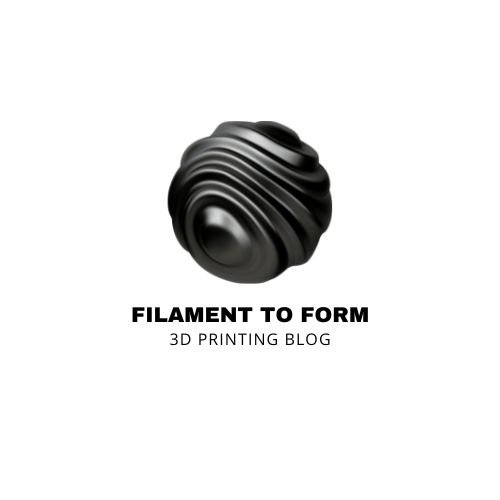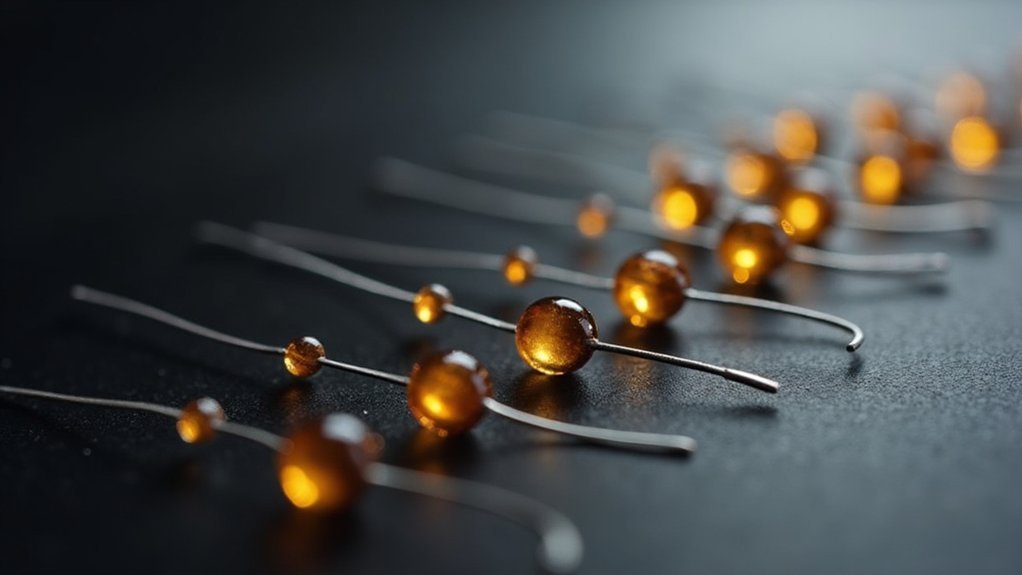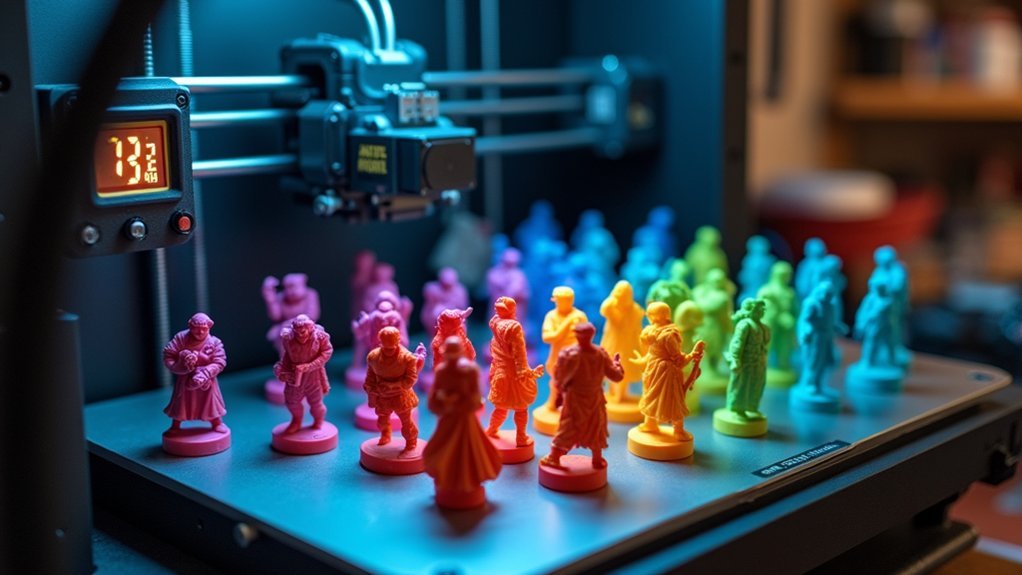You’re likely experiencing inconsistent print quality, and your thermistor might be the culprit. Temperature fluctuations of just a few degrees can cause layer adhesion issues, stringing, or complete print failures. While most 3D printer enthusiasts focus on upgrading hotends or extruders, they overlook the critical component that controls everything: the thermistor. Choosing the right one isn’t just about compatibility—accuracy can make or break your next project.
FLASHFORGE Adventurer 5M 3D Printer, High-Speed Auto Leveling
Speed enthusiasts and precision-focused makers will find the FLASHFORGE Adventurer 5M delivers exceptional performance with its lightning-fast 600mm/s print speeds and robust thermistor system that maintains accurate temperature control up to 280°C. You’ll achieve remarkable acceleration of 20,000 mm/s² while the thermistor guarantees consistent heating through its 50w power system. The printer’s vibration compensation eliminates ghosting, delivering smooth prints without temperature fluctuations. You can trust the thermistor’s precision across various materials including PLA, PETG, TPU, and carbon fiber composites, making it ideal for demanding applications requiring both speed and thermal accuracy.
Best For: Speed enthusiasts, precision-focused makers, and professionals who need fast turnaround times with high-quality prints across multiple material types including carbon fiber composites.
Pros:
- Exceptional speed with 600mm/s maximum print speed and 20,000 mm/s² acceleration with vibration compensation for smooth, ghost-free prints
- Full auto-leveling system ensures perfect first layers every time with quick 10-minute setup from unboxing to printing
- Versatile material compatibility including PLA, PETG, TPU, and carbon fiber composites with temperature control up to 280°C
Cons:
- Open design requires well-ventilated environments, limiting placement options in enclosed or poorly ventilated spaces
- High-speed printing may require more frequent maintenance and calibration to maintain optimal performance
- Limited build volume at 220x220x220mm may not accommodate larger projects compared to some competing models
Flsun T1 Pro Delta 3D Printer – High-Speed FDM Printing
The Flsun T1 Pro Delta 3D Printer delivers exceptional thermistor performance for enthusiasts who demand precision at extreme velocities, reaching up to 1000mm/s with 30,000mm/s² acceleration. You’ll appreciate the dual gear direct drive extruder’s 300°C maximum temperature capability, supporting diverse materials from PLA to PC. The high-performance control chip maintains thermistor accuracy during rapid printing, while vibration compensation guarantees temperature stability. You’ll benefit from the material break detector that prevents failed prints and the outer cover that maintains consistent chamber temperatures. The one-button auto-leveling and AI camera monitoring complement the precise thermal management for professional-grade results.
Best For: Advanced 3D printing enthusiasts and professionals who need high-speed, precision printing with intelligent monitoring features and multi-material compatibility.
Pros:
- Exceptional high-speed performance with 1000mm/s printing speed and 30,000mm/s² acceleration for rapid prototyping
- Advanced dual gear direct drive extruder supporting wide material range (PLA to PC) with 300°C maximum temperature
- Comprehensive intelligent features including AI camera monitoring, auto-leveling, material break detection, and vibration compensation
Cons:
- Delta printer design may have a steeper learning curve for users accustomed to Cartesian printers
- High-speed capabilities may require fine-tuning and experience to achieve optimal print quality
- Advanced features and performance likely come with a premium price point compared to basic 3D printers
Comgrow 5PCS Creality 3D Printer NTC Thermistor 100K for Ender 3 Series
Budget-conscious 3D printing enthusiasts who own Creality Ender 3 series printers will find exceptional value in Comgrow’s 5-pack NTC thermistor bundle. These 100K ohm NTC 3950 thermistors deliver high precision temperature readings with fast thermal conduction and excellent heat resistance. You’ll appreciate the 51.1-inch wire length that provides installation flexibility, while the 2-pin XH2.54 connector guarantees secure connections. The thermistors work perfectly with Ender 3, Ender 3 Pro, Ender 3 Neo, Ender 3 Max, and Voxelab Aquila printers. With 4.6 stars from nearly 2,000 reviews, you’re getting reliable performance and outstanding value for both heated bed and hot end applications.
Best For: Budget-conscious 3D printing enthusiasts who own compatible Creality Ender 3 series printers and want reliable replacement thermistors with excellent value through bulk purchasing.
Pros:
- High precision 100K ohm NTC 3950 thermistors with fast thermal conduction and excellent heat resistance for reliable temperature readings
- Generous 51.1-inch wire length provides installation flexibility and the 2-pin XH2.54 connector ensures secure connections
- Outstanding value with 5 thermistors included in one package, backed by 4.6-star rating from nearly 2,000 customer reviews
Cons:
- Limited compatibility – not suitable for Ender 3 V2, Ender 3S, CR-10S Pro series, Ender 2 Pro, Ender 6, or Prusa i3 printers
- Some users report size discrepancies with glass bulbs that may require drilling for proper fit in certain applications
- Occasional packaging and delivery issues reported, plus some users experience low-temperature warnings with specific printer models
Creality 3D Printer Thermistor Temp Sensor NTC100K (5 Pack)
Creality printer owners seeking reliable temperature sensors will find the NTC100K thermistor 5-pack perfectly suited for their needs. You’ll get compatibility across Ender 3 series, Ender 5 models, Ender-6, and select CR-10 printers with accurate temperature readings from -30°C to +300°C.
You won’t need motherboard disassembly thanks to the four-step installation process. The waterproof hot melt glue eliminates soldering requirements, while the included tin ring prevents leakage. These single-ended glass sealed thermistors deliver fast temperature conduction and extended service life for both hotbed and hotend applications.
You’ll appreciate the responsive customer service providing 24-hour support for any installation questions.
Best For: Creality 3D printer owners who need reliable replacement thermistors for their Ender 3, Ender 5, Ender-6, or select CR-10 series printers and want an easy installation without soldering.
Pros:
- Easy 4-step installation with waterproof hot melt glue that eliminates the need for soldering or motherboard disassembly
- Wide temperature range (-30°C to +300°C) with fast temperature conduction and extended service life
- Compatible with multiple Creality printer models and includes 5 thermistors for backup replacements
Cons:
- Some units may arrive with oil or lotion residue that needs to be cleaned before installation
- Compatibility issues reported when customers order incorrect models for their specific printer
- Limited to Creality printers and select CR-10 series, restricting use with other 3D printer brands
HiLetgo 10pcs 3D Printer 100K ohm NTC 3950 Thermistors Sensors with 1m Cable
HiLetgo’s 10-pack of 100K ohm NTC 3950 thermistors delivers exceptional value for makers and engineers who need reliable temperature sensors without breaking the bank. You’ll get ±1% accuracy with 1-meter cables that allow flexible placement away from your breadboard. While temperature readings can vary up to 5 degrees between units, you can easily calibrate using a thermometer to note offsets. These sensors work seamlessly with Arduinos and various 3D printers like Voron Trident, though you’ll need to solder solid wires for breadboard use. They’re not waterproof, but they’ll last months under continuous operation.
Best For: Makers, engineers, and 3D printer enthusiasts who need affordable, reliable temperature sensors with flexible placement options for Arduino projects and printer maintenance.
Pros:
- Exceptional value with 10 sensors at an inexpensive price point, perfect for having spares and quick replacements
- ±1% accuracy with 1-meter cables that allow flexible sensor placement away from breadboards and electronics
- Plug-and-play compatibility with Arduinos and various 3D printers, lasting months under continuous operation
- Temperature readings can vary up to 5 degrees between units, requiring individual calibration with a thermometer
- Not waterproof and requires soldering solid wires for breadboard compatibility
- Wire gauge is smaller than some stock thermistors, which can complicate installation and splicing
- Exceptional temperature range up to 450°C with superior accuracy compared to standard thermistors and thermocouples
- Direct replacement compatibility without requiring amplifier boards, making installation straightforward with most firmware types
- Complete package includes optimization components (1K 0.1% SMD resistors) for enhanced performance and resolution
- Requires resistor replacement from default 4.7K to 1K for optimal performance, adding installation complexity
- Limited to heater blocks with specific 3.1mm thermistor holes, restricting compatibility to certain hotend types
- Lower resolution when using default pull-up resistors compared to other temperature sensing options
- Intelligent temperature control with PTC rapid heating prevents common printing issues like warping and poor adhesion
- Built-in air filtration system maintains a clean workspace by removing impurities from the printer chamber
- High-speed 10,000RPM fan ensures even heat distribution and eliminates hotspots for superior print quality
- Limited compatibility as it’s only designed for ELEGOO printers and requires modifications for other brands
- Additional equipment cost on top of the 3D printer investment
- May require specific setup and integration depending on your printer model
- Exceptional speed with 600mm/s travel speed and rapid 35-second heating to 200°C for efficient workflow
- Versatile material support including advanced filaments like carbon fiber variants with 280°C extruder capability
- User-friendly automation with 10-minute setup, automatic bed leveling, and mobile app control for remote monitoring
- Higher price point compared to basic consumer 3D printers may be prohibitive for casual users
- Complex features and advanced capabilities may be overwhelming for complete beginners to 3D printing
- Limited information provided about build volume size and specific print resolution capabilities
- High accuracy with ±1% tolerance and compact 1.5mm diameter for faster temperature response
- Excellent value with 10 thermistors per pack at an attractive price point
- Wide operating temperature range from -40°C to +250°C suitable for most 3D printing applications
- Wire insulation issues reported by some users requiring additional heat shrink tubing
- Temperature discrepancies noted when tested against precision thermocouples
- May require reusing components from old sensors for proper integration in some printer models
- Superior accuracy at 1% with 100K NTC 3950 beta value, significantly outperforming factory glass bead thermistors
- High temperature capability up to 300°C enables printing with advanced filaments like PETG, ABS, and engineering plastics
- Wide compatibility across popular printer models including Ender 3 series, Ender 5 series, and CR-10 series
- Requires modification or replacement of stock hot end shroud due to protruding thermistor body design
- 1-meter cable length may be insufficient for some printer configurations, potentially requiring extension cables
- Installation involves fitment adjustments and modifications that may challenge less experienced users
Cons:
UP to 450C PT1000 Thermistor Cartridge High Temperature Sensor for 3D Printer
When you’re pushing the boundaries of high-temperature 3D printing with materials like PEEK or PEI that demand extreme heat, the PT1000 thermistor cartridge becomes your most reliable temperature sensing solution. This sensor accurately measures temperatures up to 450°C, surpassing standard thermistors and thermocouples in precision. You’ll appreciate its direct compatibility with V6 and Volcano hotends through 3.1mm thermistor holes. Unlike PT100 sensors, you won’t need amplifier boards for installation. The package includes everything you need: the 1-meter PT1000 sensor, four 1K 0.1% SMD resistors for peak performance, and terminal wire for seamless integration with your existing firmware.
Best For: 3D printer enthusiasts and professionals who need precise temperature monitoring for high-temperature printing with advanced materials like PEEK and PEI using V6 or Volcano hotends.
Pros:
Cons:
ELEGOO Smart Mini Heater for Resin 3D Printer with Air Filtration
Resin 3D printer enthusiasts who struggle with temperature consistency and air quality issues will find the ELEGOO Smart Mini Heater an exceptional solution. You’ll benefit from intelligent temperature control that eliminates mid-print detachment, warping, and poor interlayer adhesion. The PTC rapid heating technology provides swift operation while preventing overheating for enhanced safety.
You’ll appreciate the integrated air filtration system that removes impurities and maintains a clean printer chamber. The 10,000R/Min high-speed fan ensures peak airflow and even heat distribution, eliminating hotspots for superior print quality. It’s compatible with various ELEGOO printers including Saturn and Mars series models.
Best For: Resin 3D printer enthusiasts using ELEGOO printers who want consistent temperature control and improved air quality during printing.
Pros:
Cons:
FLASHFORGE Adventurer 5M Pro 3D Printer with Auto Printing System
The FLASHFORGE Adventurer 5M Pro delivers exceptional thermistor performance through its rapid heating system that reaches 200°C in just 35 seconds, making it ideal for professionals and enthusiasts who demand both speed and precision. You’ll benefit from its full-metal direct extruder that reaches 280°C, enabling diverse material compatibility including PLA, ABS, PETG, ASA, TPU, PC, and carbon fiber variants. The Core XY structure with all-metal frame guarantees thermal stability during high-speed operations up to 600mm/s. You can switch between multiple nozzle sizes while maintaining accurate temperature control, and the automatic bed leveling eliminates manual calibration needs for consistent results.
Best For: Professionals, hobbyists, and enthusiasts who need fast, high-quality 3D printing with minimal setup time and want versatile material compatibility for diverse projects from prototypes to functional parts.
Pros:
Cons:
HiLetgo 3D Printer NTC Thermistor 100K Temperature Sensor (10pcs)
Budget-conscious makers and DIY enthusiasts will find exceptional value in HiLetgo’s 3D Printer NTC Thermistor 100K Temperature Sensor 10-pack. These 100K ohm NTC 3950 thermistors deliver ±1% accuracy across -40°C to +250°C operating ranges. You’ll appreciate their compact 1.5mm diameter design, which provides faster response times than larger alternatives. The thermal time constant stays under 10^17 seconds in still air, ensuring reliable temperature readings for your printer’s hotend and heated bed. While some users report wire insulation issues requiring heat shrink tubing, the attractive pricing and consistent performance make these thermistors excellent replacements for various 3D printer models.
Best For: Budget-conscious makers, DIY enthusiasts, and 3D printer owners who need reliable replacement thermistors for hotends and heated beds across various printer models.
Pros:
Cons:
Ender 3 Thermistor 300c for 3D Printers (100K NTC 3950)
When you’re upgrading your Ender 3 series printer to handle high-temperature filaments, this M3 stud thermistor delivers the precision you need for temperatures up to 300°C. With its 100K NTC 3950 beta value and 1% accuracy, it outperforms factory glass bead thermistors considerably.
You’ll find it compatible with Ender 3, Ender 3 Pro, Ender 3 V2, Ender 5, Ender 5 Plus, and CR-10 series printers. However, you’ll need to modify your hot end shroud since the thermistor body protrudes more than stock versions. The 1-meter cable might require extension for some setups, and installation adjustments are necessary for proper fitment.
Best For: 3D printer enthusiasts upgrading Ender 3 series or CR-10 printers who need precise temperature monitoring for high-temperature filaments up to 300°C and are comfortable making modifications to their hot end assembly.
Pros:
Cons:
Factors to Consider When Choosing the Most Accurate 3D Printer Thermistors for Temperature Control
When you’re selecting a thermistor for your 3D printer, you’ll need to evaluate several critical performance factors that directly impact your printing quality and safety. Your choice should account for temperature accuracy range, resistance specifications, response time, printer compatibility, and installation complexity. These considerations determine whether you’ll achieve consistent temperature control or face frustrating print failures and potential equipment damage.
Temperature Accuracy Range
Precision stands as the cornerstone of successful 3D printing, and your thermistor’s temperature accuracy range directly impacts print quality and material compatibility. Most quality thermistors offer ±1% accuracy at 25°C, but you’ll need to take into account their performance across your entire operating range. Common NTC 3950 thermistors work effectively from -40°C to +250°C, handling most standard materials. However, if you’re printing high-temperature filaments, you’ll want thermistors rated for 300°C operation.
The beta value around 3950 indicates sensitivity to temperature changes, affecting overall accuracy. Remember that proper installation matters greatly – poor mounting or inadequate insulation can create substantial reading discrepancies, undermining even the most accurate thermistor’s performance and compromising your print results.
Resistance Value Specifications
Since resistance values form the foundation of thermistor functionality, you’ll need to understand how these specifications directly affect your printer’s temperature control accuracy. Most quality thermistors feature 100K ohms resistance at 25°C, providing the baseline for temperature calculations. The Beta value, typically 3950 for NTC thermistors, determines sensitivity to temperature changes and affects performance across different ranges.
You’ll want thermistors with tight tolerances—preferably ±1%—to minimize reading discrepancies between units. Lower resistance at elevated temperatures indicates better responsiveness, which is essential for maintaining accuracy during high-temperature printing. For demanding applications reaching 300°C, make sure your selected thermistor maintains its specified resistance characteristics throughout the entire operating range to prevent temperature drift and maintain consistent print quality.
Response Time Performance
Response time performance determines how quickly your thermistor can detect and respond to temperature changes, making it a critical factor for maintaining stable heating during 3D printing. You’ll want to focus on the thermal time constant (τ), where lower values indicate faster response times for better temperature control.
Smaller diameter thermistors typically offer superior responsiveness compared to larger sensors. NTC thermistors with their negative temperature coefficient allow quick detection of temperature fluctuations as resistance decreases with rising heat. For precise 3D printing applications, you’ll need thermistors maintaining error specifications within 1% to guarantee reliable readings during rapid temperature changes. Avoid lower-quality sensors that can vary by up to 5 degrees, as they’ll compromise your print quality and temperature stability.
Compatibility With Printers
While thermistor accuracy matters considerably, you’ll face compatibility challenges if your chosen sensor doesn’t match your printer’s specifications. Many thermistors are specifically designed for particular printer series, like Creality’s Ender 3 or Ender 5 models, so you can’t assume universal compatibility.
You must verify the resistance value matches your printer’s requirements—typically 100K ohm for NTC thermistors in standard applications. Check the operational temperature range to ascertain it handles your hotend and heated bed temperatures effectively.
Consider installation requirements carefully, as some thermistors may require modifications to your printer’s hot end or wiring setup. Incompatible sensors won’t fit correctly and could compromise your printer’s functionality, making proper compatibility verification vital before purchase.
Installation Requirements Considerations
Several installation factors can make or break your thermistor upgrade, regardless of how accurate the sensor might be. You’ll need to verify the wire length matches your printer’s configuration, as inadequate reach may require extension cables that could introduce signal interference. Check your hotend’s compatibility beforehand, since some thermistors need specific fittings or modifications for proper integration.
Consider the installation complexity for your skill level. While some thermistors simply plug in without motherboard disassembly, others demand more technical procedures. You should prioritize models with waterproof housing or heat-shrink protection to prevent insulation failures during operation.
Don’t overlook physical dimensions—size mismatches can force you to modify printer components. Measure your current thermistor’s specifications and compare them carefully before purchasing.
Wire Length Specifications
Wire length plays an essential role in thermistor selection, with standard options typically spanning 1 to 1.3 meters to accommodate different printer configurations. You’ll need to take into account your specific setup when choosing wire length, as shorter wires can limit sensor placement and may require extension cables for larger printers. However, you shouldn’t automatically choose the longest option available, since longer wires introduce resistance that can affect temperature reading accuracy.
When planning your installation, make sure the wire routing won’t interfere with moving parts or block airflow. You’ll also want to verify compatibility with your existing wiring harness by checking the wire gauge and connector type match your printer’s specifications for reliable connections.
Durability Under Heat
Since 3D printing environments subject thermistors to extreme temperatures that can reach 300°C or higher, you’ll need sensors specifically engineered to maintain accuracy under sustained thermal stress. The best thermistors feature robust construction using high-quality materials that resist thermal degradation over time. You should look for models that maintain ±1% tolerance even after prolonged heat exposure, as accuracy deterioration directly impacts print quality.
NTC thermistors like the 100K NTC 3950 offer excellent heat durability while providing rapid response times to temperature fluctuations. To maximize longevity, you’ll want to protect your thermistors with heat-shrink tubing or protective casings. This prevents mechanical failure and guarantees consistent performance throughout the sensor’s service life, particularly when operating at elevated temperatures regularly.
Cost Per Unit
When evaluating thermistor options, you’ll find unit prices typically range from $0.50 to $5.00, making cost a considerable factor in your selection process. However, don’t let price alone drive your decision. Higher-priced thermistors often deliver superior accuracy and temperature stability, which translates to better print quality and reduced material waste.
Consider bulk purchasing options like 5 or 10-packs to reduce unit costs considerably. While budget thermistors might seem attractive initially, they’ll likely require frequent replacements due to lower durability, increasing your long-term expenses.
You should balance your budget against performance needs. If you’re running high-performance applications requiring precise temperature control, investing in quality thermistors will save money through improved reliability and consistent results.
Frequently Asked Questions
How Often Should I Replace My 3D Printer Thermistor for Optimal Performance?
You should replace your thermistor every 6-12 months or when you notice temperature inconsistencies, failed readings, or print quality issues. Don’t wait until it completely fails during critical prints.
Can I Use a Different Resistance Thermistor Than What My Printer Originally Had?
You can use a different resistance thermistor, but you’ll need to update your printer’s firmware configuration to match the new thermistor’s resistance table for accurate temperature readings.
What Causes Thermistor Readings to Drift and Become Inaccurate Over Time?
Your thermistor readings drift because you’re exposing them to repeated heating cycles, mechanical stress, moisture contamination, and oxidation. Wire connections loosen, and the thermistor material degrades, causing resistance values to shift over time.
How Do I Calibrate My Thermistor After Installation for Accurate Temperature Readings?
You’ll need to heat your hotend to known temperatures using a separate calibrated thermometer, then adjust the thermistor table values in your firmware to match the actual measured temperatures.
What’s the Difference Between Glass Bead and Cartridge Style Thermistors for Accuracy?
Glass bead thermistors offer faster response times and better accuracy due to their smaller thermal mass, while cartridge style thermistors provide more durability but slower temperature response for your printer’s hotend.





Leave a Reply